Only a week ago, the thought of Cherie and I sailing off into the sunset was a “certainly, but someday” sort of thing.
But after spending some time at the Miami International Boat Show & Strictly Sailing event, the idea of relocating at least part of the year onto a liveaboard is starting to seem more real.
In the few days since the boat show, we’ve both shown signs of ‘boat fever’ – surfing boat listings and dreaming of life on the water. We even managed to route from Miami to Orlando by way of the Florida Keys (only a slight detour) to spend an afternoon checking out a rather sweet used Gemini 3000 catamaran. And yesterday, thanks to an introduction from an online friend, we further detoured to Stuart Florida to meet up with Cindy & Gray of Cindy’s Island to tour their boat and hear stories of their past few years on the water.
We’ve been soaking up insight, experience, and advice – and over a beer at a dockside bar a few nights ago Cherie and I started working on our first draft of the things that we are looking for in our ideal home afloat. Thoughts and feedback appreciated:
Boat Size & Type:
- Sail! — We both a drawn to sailboats. Even the nicest motor-cruiser isn’t really that interesting to us. Whatever we get, it must have a mast!
- Monohull or Catamaran? — A week ago we were feeling strongly drawn toward catamarans. But after seeing some really nice monohull cabin layouts (like the sweet Catalina 375), now it really is a tossup.
- Sailing Optimized / Light Wind Capable — We want a boat that is fun to sail, and which is not overly dependent upon its engine. Too many sailboats seem to spend way too much of their time cruising under power. We are not all that concerned about going fast, but would like a boat that can sail (slowly) even in light wind.
- Cruising Area — It would be nice to get a boat that would be capable of setting off to circumnavigate the world, but at the very least we want a boat that can handle coastal cruising up both coasts of North America. We want to be able to sail the Pacific Northwest, San Francisco Bay, Baja, the Caribbean, Florida, the Atlantic Coast, and all points in between – including through the Panama Canal.
- “Thin Water” Capable — All catamarans can handle shallow water exploration. But if we get a monohull, I don’t want to be confined to deeper waters. A “Shoal Draft” capable monohull that draws less than 5′ would be great. Less than 4′ would be even better. Less than 3′ would be amazing. And less than 2′ is incredible. But… To get shallow water capability, we do not want to sacrifice too much stability in the process. Finding the sweet spot will be key.
- Length — It seems like 30′ – 40′ is the sweet spot for a liveaboard cruiser. The Gemini 3000 (30′) we saw on Monday is definitely a livable size for a catamaran, and the 37′ Catalina we toured at the boat show was a great size for a monohull. Whatever size we get, we want it to be sailable singlehandedly by one person.
- Width — It would be nice to be able to fit into a standard slip. But what size is considered “standard” in most marinas? The Gemini 3000 is 14′ wide and seems a practical width. Many other catamarans are probably too wide to avoid extra marina fees.
- Mast Height — In addition to coastal offshore cruising, we want to be able to cruise the Intercoastal Waterway (55′ – 65′ mast height limit), the “Great Loop“, and maybe even explore the Okeechobee Waterway (49′ mast height limit) across Florida. To do the inland sections of the Great Loop we will have to be able to drop the mast to clear a 19′ bridge near Chicago. If our above water height can be reduced to less than 15′, we can cruise the entire Erie canal!
- Strong Bones — We want a solid boat that is built to last. An older used boat with a proven pedigree is preferable to a shiny newer boat that will be falling apart in just a few years.
- Photogenic — A sailboat is a work of art. We are photographers and travel bloggers. Of course we want a boat that will look good in pictures… *grin*
Layout, Comfort, & Storage:
- Cabins — A lot of boats seem designed for the charter market, with three or four or even more small cabins and space overall to sleep twelve or more. We want a boat designed for a couple, with one large and comfy master cabin, and just one private guest cabin so that we can have space to take on a friend for an extended stay as crew. If the boat has more than two cabins, the surplus will be converted into storage or geekery.
- Heads — Again because of the charter market, a lot of boats seem to have two or even three bathrooms. We only want one. Any extras are just wasted space and something extra to clean.
- Headroom — We will need at least 6′ headroom in all the primary interior spaces. I don’t want to live in a home where I have to spend a lot of time hunched over.
- Dry Inside — Some boats leak a little. Others are known for being “wet” on the inside. Considering how important our electronics and our comfort are, we want a boat the excels at keeping the interior space cozy and dry.
- No Carpet Headliner — One of the things we most disliked about the Casita travel trailer was its use of a fuzzy carpet headliner. Carpet gets musty over time, and it is near impossible to clean. In contrast, we really love the bright and low maintenance fiberglass gelcoat interior of our Oliver. We want something just as durable and easy to keep clean in a boat.
- Comfortable “Boondocking” at Anchor — A lot of cruising boats seem designed for marina hopping, always ending each day plugged into shore power at the next marina. Bah. While RV’ing we prefer extended boondocking, and while sailing we would like a boat that is happy to spend extended periods of time away from dock.
- Inside / Outside Dining — Seating for six would be great – it would be nice to have space to actually entertain guests. Being able to entertain both inside and outside is important too.
- Screens & Shade — Having a way to shade and screen the deck would be great. Bugs – not so great.
- Workspace With A View — We will continue to spend a lot of time every day working on our computers – and we want the view from our workspace to be inspiring. A lot of monohulls seem to be overly dark inside with not enough windows to let in light or a view. No matter what, we want to have a great view from our main workspace without needing to bring our laptops up on deck!
- A View To Movies — We will want to be able to mount at least a 24″ screen (and appropriate speakers) for movie watching. Having the screen on a swing arm so that it can be position for use with our laptops as well is great.
- Storage — Onboard we will want a place to store a decent dingy, two foldable bikes, and eventually some dive gear as well. And of course, we want enough food and clothing storage to be able to last a while without needing to wash or restock.
- Cat Friendly — We will need a place to tuck Kiki’s litter box that is both out of the way and accessible for cleaning.
- Climate Control — Will we want an air conditioner while at dock? What about some sort of heater when anchored out on cold nights? A good set of ventilation fans and hatches is a must, of course.
- Paper Towel Holder — Cherie reminds me that there must be a good place to keep paper towels handy – something all too often overlooked.
Geekery, Systems & Electronics:
- Solar Power — We will need space to mount 250-500 watts of solar panels where they will get minimal shade from the boom or mast, and a MPPT capable charge controller. A wind power generator might make a nice addition too.
- Battery Capacity — We will need space for at least 200-600 amp hours of AGM storage batteries.
- Battery Charging — We will want a large enough alternator on the engine to quickly charge the batteries, and/or a generator that can handle the job. We will also want a nice sized sine wave inverter / charger on board.
- Water — We will want space to someday add a water maker, and large enough fresh water tanks to last a while without. And of course, we will need a hot water heater and a filtration system for our drinking water.
- Antennas — We will eventually want antennas in the mast for SSB radio, long range WiFi, a cell phone booster, and television reception. Having space to eventually add radar is probably a good idea too.
- Space For Geekery — We will need space to mount a chart plotter, various radios, and all sorts of other technology. The more accessible and easy to work with the wiring spaces are, the better.
- Easy Maintenance & Upgrades — Too many boats seem to be incredibly poorly designed when it comes to doing maintenance and upgrades. The engine should be easily accessible. Wiring should be accessible, well labeled, and with space for new runs. Plumbing and tanks should be reachable, and well labeled. And so on… You shouldn’t have to destroy pretty woodwork to get at the internal systems. I’d rather leave off the “pretty” entirely, and instead focus on intelligent functionality and easy access.
That’s the list we came up with – the ideal. Now we need to start debating the tradeoffs, and figuring out where we are willing to compromise and where we are not.
And of course, we want it at all as affordably as possible to maintain our current debt-free lifestyle. Fortunately we’ve heard plenty of stories lately of great used boats selling for a fraction of what the same aged boat would have sold for a few years ago.
A new boat on the other hand probably does not make any financial sense.
Any thoughts? Things we are missing? Suggested additions or deletions?
And most importantly – please point us towards any boats that come close to meeting our needs!
Anyone who helps us find our perfect cruising home will get a “finders fee” of a nice bottle of rum, and an invitation on board to sail with us.
Ahoy, anyone?

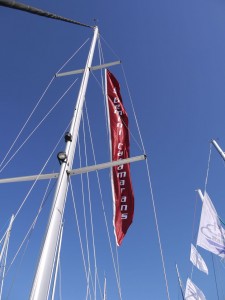
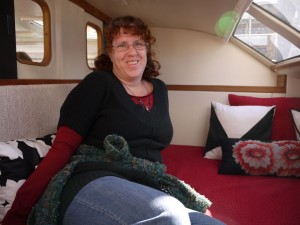
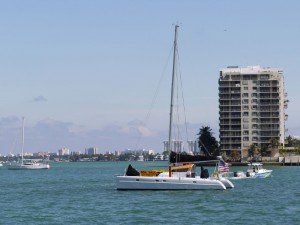
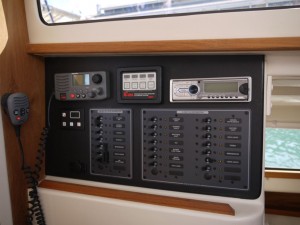
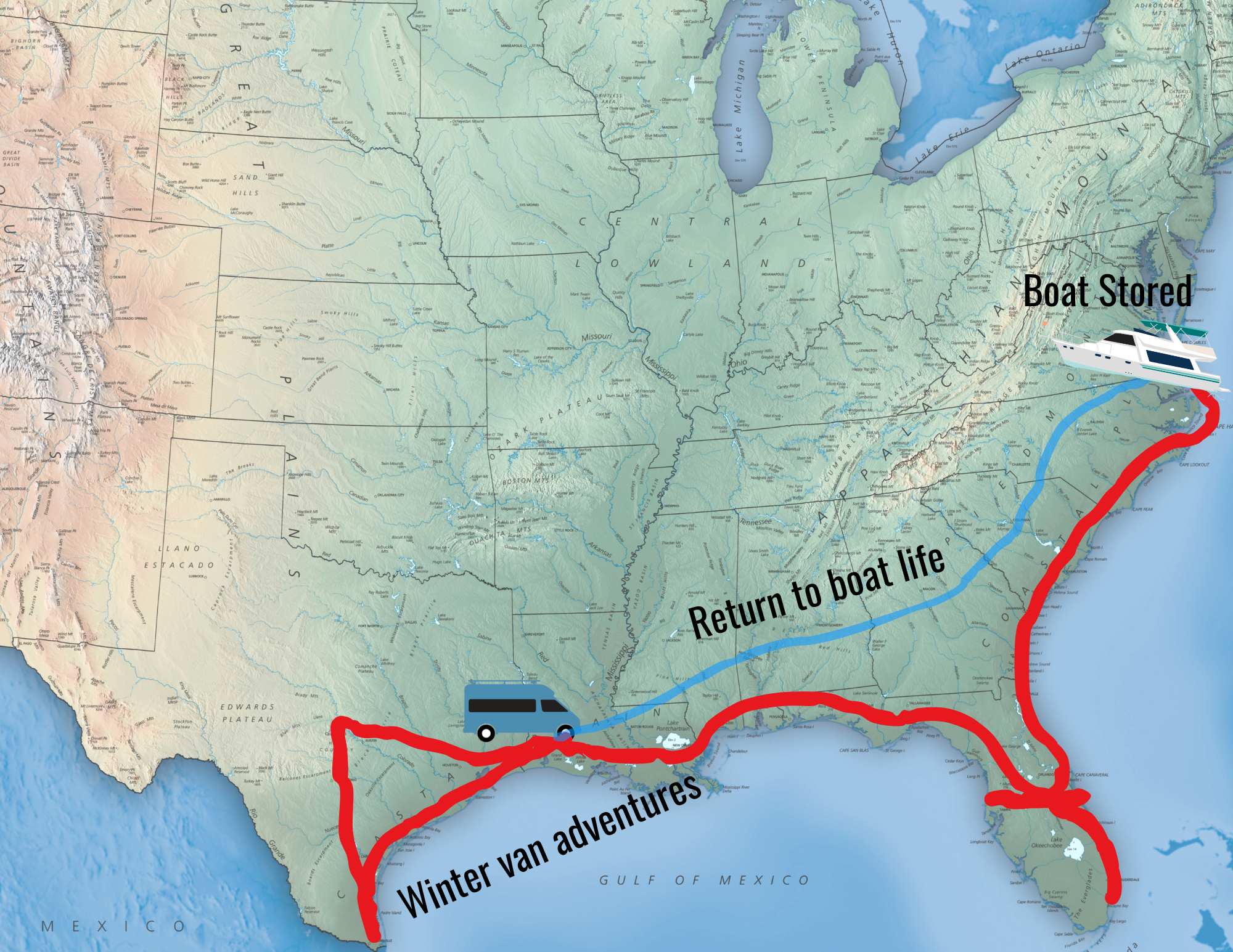
Catamarans are usually not recommended for offshore sailing but might be more comfortable as a liveaboard boat (well, at least for me). If you do decide to go with a catamaran are you planning to go to long range, offshore sailing? How much sailing experience is needed for that?
.-= Jack´s last blog ..2001 Rinker SIESTA 243 SIESTA DECK BOAT =-.
Allow me to gently correct… catamarans are MORE than capable for blue water/ off shore sailing. Like any monohull, there are ones built for blue water and ones built for coastal cruising. Our boat is a St. Francis 44 built in South Africa. Every single one is sailed away from the factory into some of the roughest blue water on the planet to wherever it’s new home will be. Ours went from S.A. to Brazil to Florida before we got her. More than capable. Then there are some cats (like some monos) built somewhere and either shipped or trucked to point of sale/ new owner never having to prove herself on the way.
Once you are actually out there cruising in blue water, you will notice there are MANY MANY MANY round-the-workd cruisers in cats.
.-= BOATBABY´s last blog ..WIP – birthday =-.
Hi there,
Like Sara said, come on over (in real life or virtually) and we’ll talk your ears off about the boat life. We’ve been aboard full time 11+ years, two different catamarans, cruising and living aboard, with and without kids & pets.
Yes, we’re on a St. Francis 44 cat vintage 1999. We purposely wanted galley down. For us the advantage is not having your cooking messes be the first thing you/ your guests see when you walk aboard. We wanted a clean/ separate entertaining/ play space and the galley mess out of sight. Plus all galley downs give you WAY more galley/ counter/ food storage space, plus the cook can still chat away with everyone, it’s not as it it’s sealed off. It’s only a few hundred square feet afterall, you can’t be THAT isolated from anything
Best of luck to you, and PLEASE don’t hesitate to contact us. We’d be happy to help you find the right boat, answer questions, etc.
cheers
Cindy
.-= BOATBABY´s last blog ..exhale =-.
Chris and Cherie, please check out this website http://1000days.net/home/, in case you haven’t heard of it. It is about Reid Stowe, a guy who has spent over 1000 days at sea on the sail boat he built without ever seeing land or being resupplied. He has set the record for being out to sea alone. AT first he had his girlfriend Sonya with him, but she got pregnant and had to leave after around 300 days or so. You can, if you want, catch up on all his e-mails about life out to sea.
I was in the Navy 20 years, 11 on ships, and I can hardly describe the feeling of being out on the ocean. Even if it was on a really big ship. I miss it is all I can say, the ocean that is. HA HA
Good luck and keep your dreams and travels going.
Later, God Bless,
Steve
How exciting!! One of my favorite stops on our first tour was with our friends who live aboard their boat in Annapolis. Here are the pics from our visit:
http://www.flickr.com/photos/happyjanssens/sets/72157603271972221/
That will be a really fun journey to follow you on…I hope it all falls into place!
Sara —
They have a fabulous catamaran! Do you know what type it is, and what size? The galley in your photos looked positively huge!
A little bit of cyberstalking leads me to believe that is a St Francis 44 catamaran. It’s a hardcore, ocean going boat. It looks like used ones go for the mid $300K range. Google will provide many links.
I am not wild about some of the design choices. First, the berths are all in the bridge deck, not in the hulls. They will be higher above the waterline and so subject to more motion than a berth set low in a hull. Also, waves will slap against the underside of the bed while underway and in rough anchorages. I’m not excited about the galley down in a hull instead of up in the bridge deck. At anchor, I am often cooking while we entertain, so I like the galley to be with easy conversation distance of the main salon and the cockpit. There are lots of subjective elements in boat design, it can be a real challenge to find the best configuration for any given person or family.
Here is a link to a catamaran dealer with a great write up on the elements of catamaran design. It is, of course, biased toward the brand he sells, but he makes a lot of valid points.
http://www.bayacht.com/goodbad.htm
Chris…
My friend (Cindy) just emailed me back and said that you are welcome to contact her via email about anything and everything boat related. They would love to answer your questions. Here is their blog: http://www.zachaboard.blogspot.com/
And her email is: cindywallach (at) yahoo (dot) com
Can’t wait to meet you guys at NuRVers this year!
.-= Sara´s last blog ..Rock Your Camera =-.
Thank you so much, Sara!
We are greatly looking forward to finally meeting you guys in just a couple months!!
It may be helpful when selecting a boat to start with a single pivot point, for example, cruising area. The cruising area you mention above includes some serious seas. The Gulf Stream right off the Atlantic coast can pose some serious challenges as can the trek northward from Baja California up to the US west coast. Your choice of cruising area will lead to compromises on other aspects of the boat, most notably rig and hull characteristics.
Safety should also be a paramount concern. Either one of you should be able to safely operate your boat in even the most extreme conditions. When selecting a rig and designing upgrades, try to make everything possible from the cockpit. Weather prediction and navigation are important aspects of safety. It is very important to learn the old ways and use them as a guide for designing your electronics installation. I am a firm believer in minimal cockpit instrumentation since the person driving the boat should be looking around, not down at a screen. Always have paper charts, a magnetic compass and old school navigation tools on hand since electronics will fail at the most inconvenient times.
Your cruising area will also dictate how many and what spares you will need to carry. If you are going to exotic, remote locales like the many beautiful uninhabited islands in the Bahamas or traveling to third world countries in Caribbean and Latin America, you need to have the knowledge, tools and supplies to solve most of your own problems. Outside the US, it is difficult to get US companies to honor warranties.
Be wary of carrying the latest technology with you. Boats are a very harsh environment with sudden motion, salty air, etc. Things that work just fine on land will break all the time and for no apparent reason. It will be difficult to replace high tech things that fail while traveling outside the US. Stick to old school, proven technologies for crucial things like batteries. AGMs are nice, but golf cart batteries are universally available. We carry an external RAID array in a waterproof box for backups. We break it out in calm conditions and keep it safely stowed the rest of the time.
Keeping the inside of the boat dry is very important to me. Look for an engine installation with dripless shaft seals or saildrive transmissions. Look for deck stepped masts instead of keel stepped masts. A keel stepped mast rests on the boat’s keel and goes up through a hole in the deck. It is a stronger installation, but when it fails, it will most likely rip a big hole on your deck. In addition, the mast acts as a downspout for every drop of water that gets into the mast through fittings, etc. Finally, since the mast moves and flexes as you sail, it is difficult to keep the hole in the deck sealed completely. Either kind of mast can be removed and put into storage if you want to cruise the great loop or other inland waterways with low bridge clearances.
If your primary interest is boondocking and anchoring out, don’t worry about the width of your catamaran. A wider cat (at least 50% of its length) will give you better sailing performance, be safer and much brighter, airier and roomier. You will have to be more choosy about your haulout ports and pay a little extra when you need to be in a marina, but the tradeoffs are worth it. If you want a catamaran, get a catamaran, not a bastardized mono-hull wannabee. Mooring fields are available in most places where you might want to leave the boat (at least on the east coast of the US and through the Caribbean). A catamaran will also be better for entertaining, litter box isolation, bright interior area and outside work/play space. Make sure any cat you buy has all the necessary safety features and is solidly built enough for sailing the places you want to go. A lot of cats are designed for inland waters and will start to have problems when exposed to the stresses of open seas. Cats also require very careful monitoring while under sail. A monohull with too much sail up with heel way over, then round up into the wind and mostly stop. A cat with too much sail up will go faster and faster until it pitchpoles (flips over forward in a spectacular way). Cats are often unsinkable, but they won’t right themselves either. Have plans for dealing with being trapped on an inverted catamaran (better than a sinking monohull, I guess). I still prefer monohulls, but cats definitely have their advantages.
The most decisive factor in the safety of a sailing vessel is the crew. So learn all you can from books and people. Also think about taking some classes. Look for delivery skippers that will take one or both of you along. See if you can grab a crew berth on either a big ocean race or cruising rally. I’ve heard that if you show up on the docks before a big rally, you can often find a boat that needs an extra hand.
–gray
Gray —
Thank you for the awesome comments. It is really great to get so much feedback from someone who has actually spent time living on water.
I don’t know if you have found these links already. They are a couple of people who did extensive documentation on their boat system design and implementation.
http://www.sailwhisper.com
http://www.rutuonline.com
Rutu goes for major automation of systems with lots of push buttons, status displays and custom make circuit boards. The site is only about the boat design and construction, no travel. I don’t know if he ever finished his boat….
Whisper has great detail about actually using the systems underway, getting technical support on remote Pacific Islands, etc. They also include 7 years of logs with details of their lives and travels.
There are tons of other boat blog sites, but I find myself referring to these two for system design ideas and inspiration.
Enjoy!
Great list! I love how you’re talking it out, over, around and through. I’m inspired: It would be a good exercise for us to write down our list, too.
I’m totally with you on the “no need for multiple heads” thing. We toured a boat in Stuart where the owner was so proud of the FOUR toilets. All I could think was, “Yeah, buddy, you can clean all those. Not me!”
.-= Louise´s last blog ..West Texas solitude =-.
BTW – click here to see a few photos of the Trawler Cat we saw. The bedroom and the kitchen were enormous!
Wow, you two have made spectacular progress on the research… that is a very comprehensive spec (and I agree with all of it). Headroom is an important one; being 6’4″ I had considerable difficulty with this part, and was regretting that I had not though to get myself bonzai’d as a teen.
One honesty-impaired broker in Seattle, however, responded to my complaints about insufficient headroom on one boat by saying, “no, mate, that’s a good thing! In a seaway, you can brace with your neck muscles and have both hands free!”
Just one of many absurd bits of fiction from that guy… it’s a jungle out there.
Anyway, great list – I’ll keep my eyes open for you. Here’s mine, the product of a very similar quest:
http://nomadness.com/nomadness-walkthrough
Steve
.-= Steven Roberts´s last blog ..BEHEMOTH Memories =-.
Your Amazon 44 is indeed a stunning boat, and I can’t wait to see her in person.
I really love the raised pilothouse design. The windows appear glorious.
As for the neck muscle bracing… That actually makes sense you know…
Thanks, Chris… she’s a sweet boat, and I’m hoping to have much more time on water this year!
The neck muscle thing is fine in mild conditions; I know an Aussie circumnavigator who has a pad over his galley counter where he leans his forehead for just that reason. But random braces to the overhead underway… eeek. Cervical spine damage!
.-= Steven Roberts´s last blog ..BEHEMOTH Memories =-.
This is such a great list for anyone looking into boat living. You’ve done so much of the pre-work for us.
Noah and I thought about boat life when we lived in Bocas del Toro, but e never got to the point of researching as you have. Now that we live so far inland, a boat would be pointless, it’s on the backburner for the moment.
But I do want to mention the woman who first got me interested in boating life. An amazing woman named Valerie who owned a chambres d’hotes called La Matabone outside of Lourges in the South of France. (I include her link bc if you ever have a chance to stay with her, you should. She’s most definitely what I call a true traveler.)
Valerie lived for years with her family on a boat in the South Pacific — I believe New Caledonia — and ran a boat supply store for others boating the area.